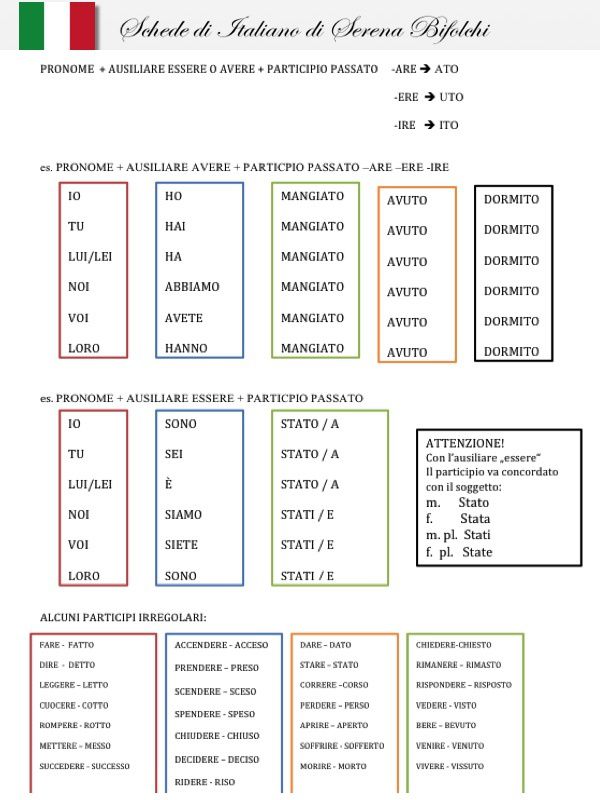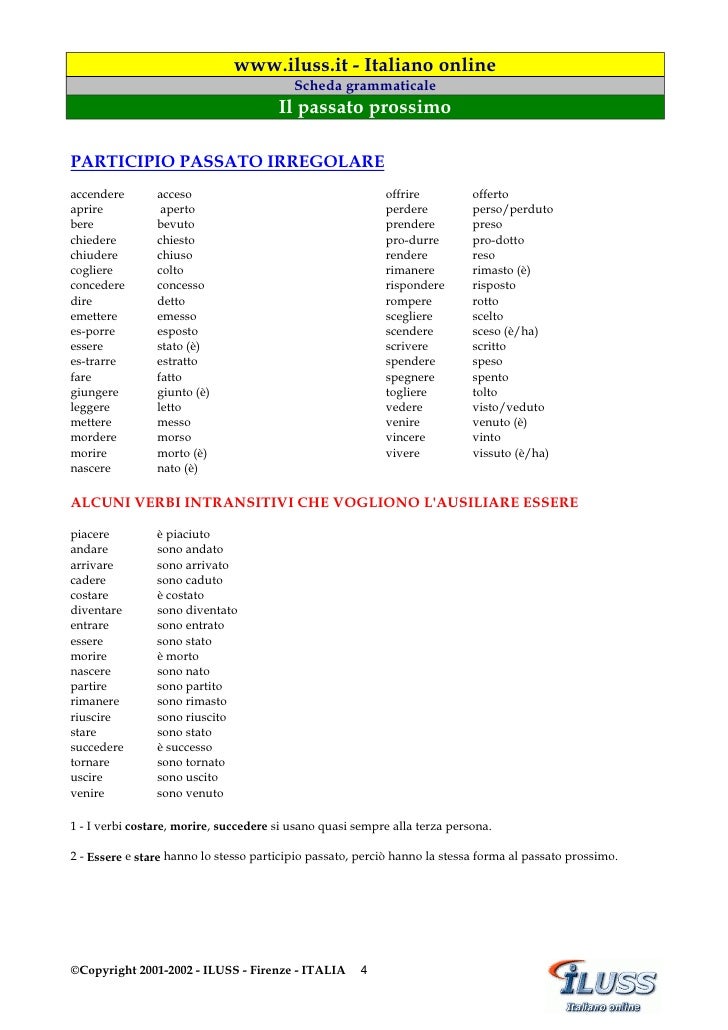
18. Grammatica italiana Indicativo passato prossimo YouTube
bere Konjugation von Verben in allen Zeiten, Modi und Personen. Suche die Definition und die Übersetzung im Kontext von " bere ", mit echten Kommunikationsbeispielen. Konjugation Verb bere auf Italienisch: Partizip, Präteritum, Indikativ, unregelmäßige Verben.

L'Imperfetto Italian with Nicco Dite!
Conjugate the Italian verb bere in several modes, tenses, voices, numbers, persons : indicative mode, subjunctive, imperative mood, conditional, participle form, gerund, present, past, future perfect, progressive.. Passato prossimo (Present perfect) io ho bevuto tu hai bevuto lui ha bevuto noi abbiamo bevuto voi avete bevuto loro hanno.

Il verbo BERE Italian language learning, Italian language, New words
The passato prossimo is a compound tense, meaning it is made up of two verbs. The first verb is a conjugated form of essere or avere. ( Conjugated means that you provide the form that corresponds to the subject or the person carrying out the action). This verb is called an auxiliary verb or helping verb, because it helps make clear the temporal.

PPT The passato prossimo PowerPoint Presentation, free download ID
Conjugación verbo bere en italiano, ver modelos de conjugación italiano, verbos irregulares. Definición y traducción en contexto de bere.. Passato prossimo. io ho bevuto; tu hai bevuto; lei/lui ha bevuto; noi abbiamo bevuto; voi avete bevuto; loro hanno bevuto; Trapassato prossimo. io avevo bevuto; tu avevi bevuto; lei/lui aveva bevuto;

Passato prossimo Impariamo l'italiano
'bere' conjugation - Italian verbs conjugated in all tenses with the bab.la verb conjugator.
Verbi Idiomatici фото в формате jpeg, большая коллекция идей на тему
Conjugation of the verb Bere in all tenses: future, present and past. 🎮 Conjugation trainer for memorizing forms.. Presente Imperfetto Passato prossimo Trapassato prossimo. Condizionale . Presente Passato. Imperative . Imperative. For the settings to take effect, you must restart the trainer Restart. Click to start. 1 of 10. Conjugation.

Passato Prossimo
The regular participio passato of a verb is formed by removing the -are, -ere, and -ire endings of the infinitives and adding, respectively, the suffixes -ato, -uto, and-ito to the root of the verb. For example, the past participle of mangiare is mangiato; of bere, bevuto; of sentire, sentito.However, the irregulars among participi are many, especially with second-conjugation verbs: scrivere.

Italian how to use IMPERFETTO and PASSATO PROSSIMO Irregular verbs
What to Know About "Bere" It's an irregular verb, so it doesn't follow the typical -ere verb ending pattern. It's a transitive verb, so it takes a direct object. The infinito is "bere." The participio passato is "bevuto." The gerund form is "bevendo." The past gerund form is "avendo bevuto."

PPT The passato prossimo PowerPoint Presentation, free download ID
ALMA Edizioni: il piacere di imparare l'italiano. ALMA Edizioni propone tre modi per entrare nella lingua italiana: i suoi libri, i video di ALMA.tv e gli eventi. Clicca sul percorso che ti interessa! scopri tutti i libri e le risorse di ALMA Edizioni per adulti, ragazzi e bambini. la web tv di ALMA Edizioni dedicata alla cultura e alla.

Bullet Journal
The Italian Conditional Perfect or Condizionale Passato is made with the conditional tense of avere for transitive verbs or essere for reflexive and intransitive verbs and the past participle of the verb. The past participle agrees with the subject for verbs that take essere, or with the direct object for verbs that take avere.

BERE Passato Prossimo Tutorial for Irregular Italian Verbs YouTube
Coniugazione verbo 'bere' - coniugazione verbi italiani in tutti i modi e tempi verbali - bab.la bab.la - Online dictionaries, vocabulary, conjugation, grammar share

La formazione del participio passato nei verbi francesi Francese
Italian idiomatic expressions. If you liked this lesson on how to use the bere passato prossimo conjugation in Italian, consider sharing it with your social media friends who are also studying Italian. Learn the bere passato prossimo conjugation with audio recordings and example sentences. You will be able to conjugate bere like a pro!

The Passato Prossimo The Most Commonly Used Past Tense In Italian
Passato Prossimo = Presente Avere/Essere + Participio Passato. Examples: Ho mangiato - I ate. Sono andato - I went. As you can see in the examples Passato Prossimo is a compound tense: in order to make the Passato Prossimo you will need to combine two elements: An auxiliary verb essere or avere in the present tense.

Bere Passato Prossimo Conjugation (with AUDIO examples!)
Coniugazione del verbo italiano bere: congiuntivo, indicativo, condizionale. Verbi irregolari e modelli verbi italiani. Traduzione in contesto di bere, con esempi d'uso reale.

El passato prossimo en italiano (I) los participios Elblogdeidiomas.es
Conjugate the Italian verb bere: indicative, congiuntivo, condizionale, passato prossimo, auxiliary essere, avere. Translate bere in context, with examples of use and definition. Translation Context Grammar Check Synonyms Conjugation. Synonyms Documents Dictionary Collaborative Dictionary Grammar Expressio Reverso Corporate.

Спряжение Bere 🔸 Итальянский глагол во всех временах и формах passato
model for -are verbs: amare model for -ere verbs: credere models for -ire verbs: servire; finire (-sc- suffix); bere - irregular verb : Firefox and Chrome users: install a shortcut (Firefox or Chrome) then type "conj bere" in your address bar for the fastest conjugations. bere 'bere' is the model of its conjugation.